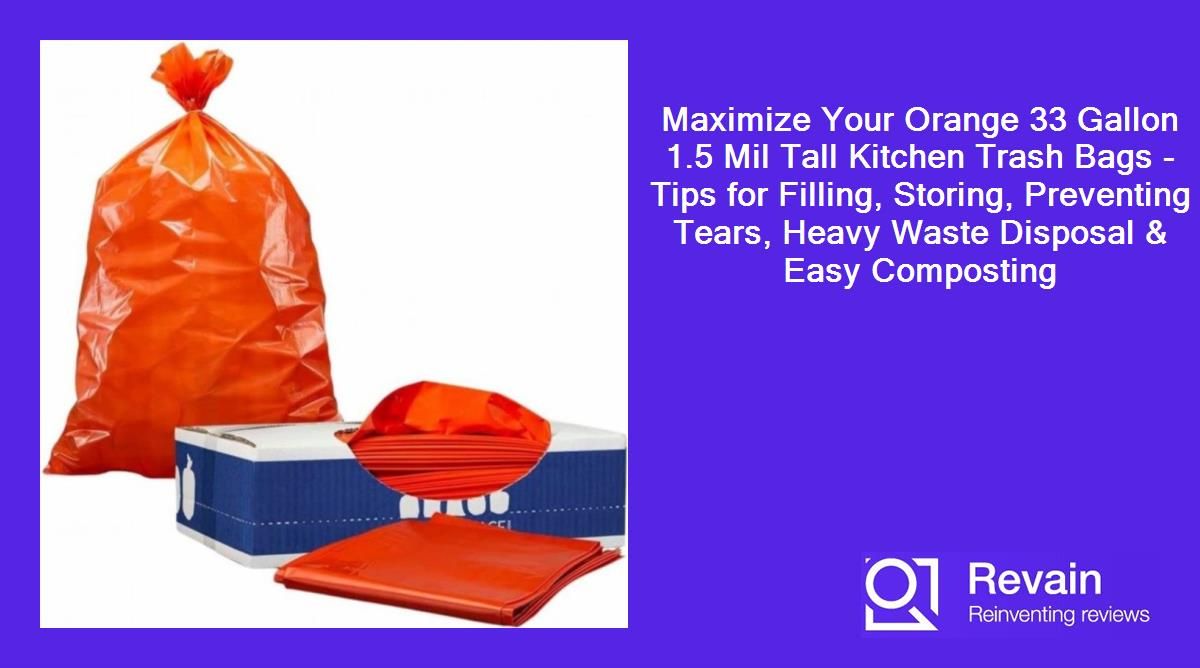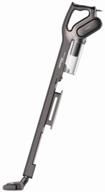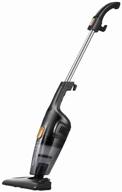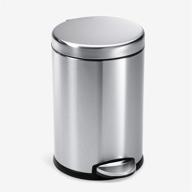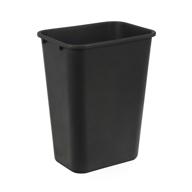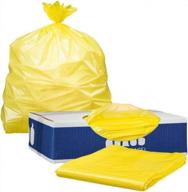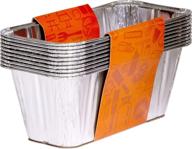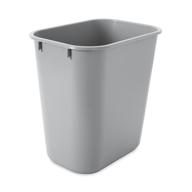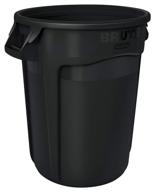Get the Most from Your 33 Gallon Trash Bags
Thirty-three gallon trash bags like the Orange plasticplace bags are ideal for managing lots of waste. But to really get the most out of these extra large trash liners, follow these tips:
Fill Them Completely
These tall kitchen bags can hold a lot. Don't throw them out after just a little trash. Really pack them full to maximize the bag space and get your money's worth from each one.
Double Bag for Sharp or Wet Waste
If you have particularly heavy, wet, or sharp waste, double bag to prevent rips and tears. Simply place your 33 gallon bag inside a second bag for extra protection and strength.
Tie Securely
- Gather the top tightly.
- Tie a firm knot.
- Consider double knotting for heavy loads.
This keeps stinky trash secure inside while carrying and prevents spills.
Lift Properly
When lifting full 33 gallon bags:
- Bend knees to avoid back strain.
- Use legs to lift, not back.
- Hold bag close to body for better leverage.
This technique protects against injury from heavy lifting.
Take Out Frequently
Don't allow trash to pile up. Take loaded bags outside often to prevent odors and clutter inside. This also makes each bag lighter and easier to manage.
Using these tips will extend the life of your Orange 33 gallon bags, make trash simpler to handle, and keep your home cleaner and nicer smelling.
Similar products
Preventing Tears in 33 Gallon Trash Bags
Thirty-three gallon tall kitchen bags like the Orange plasticplace liners can develop annoying tears and rips if not handled with care. Follow these tips to prevent damage:
Avoid Overloading Bags
Overstuffing these extra large trash bags puts too much strain on the plastic. Try not to exceed 30-35 pounds in each bag.
Double Up For Sharp Objects
Pointy, jagged waste can easily puncture plastic. Place sharp objects like broken glass or metals inside a smaller bag first before putting in the 33 gallon liner.
Cushion Heavy Items
| Heavy Waste | Cushioning Material |
|---|---|
| Appliances | Towels, newspaper, bubble wrap |
| Tools | Cardboard, packing paper |
| Cans | Paper, plastic grocery bags |
Lift Properly
When lifting loaded bags:
- Hold near the top, not bottom.
- Keep close to body to minimize strain.
- Bend knees for leverage.
Handle Gently
Avoid throwing or dropping loaded bags. Set down gently.
Take Out Frequently
Don't allow waste to accumulate. Take bags out often so they don't get too heavy and prone to tearing.
Tie Securely
Double knot the tops so no items poke out during transport.
Following these precautions will keep your 33 gallon Orange bags intact for reliable waste management.
Storing and Organizing 33 Gallon Trash Bags
Thirty-three gallon tall kitchen bags like the Orange plasticplace liners take up a lot of space. Follow these tips to store and organize them:
Choose a Dry Storage Area
Select a storage spot that is:
- Indoors to protect from weather
- Free of moisture and leaks
- Not prone to bugs or rodents
A pantry, closet, basement or garage can work well.
Store Vertically
Stand rolls of 33 gallon bags upright rather than flat to save space. This prevents the collapse and flattening that makes bags hard to open.
Use Shelving
Place rolls on shelving units rather than directly on floor. This protects from dirt, water spills and critters.
Categorize by Size
Organize different size bags on separate shelves for easy access:
- 33 gallon - bottom shelf
- 16 gallon - middle shelf
- 8 gallon - top shelf
Label Clearly
Use a label maker or permanent marker to identify:
- Bag size
- Mil thickness
- Quantity per box
This allows for quick size selection.
First In, First Out
Rotate stock by placing new boxes behind current ones. This ensures freshness.
Replenish Stock
Shop sales and stock up so you never run out. But don't overbuy more than you can store properly.
With some simple organization, you can easily store many 33 gallon trash bags. Just be sure to allow sufficient air circulation to prevent mold or mildew.
Disposing Bulky Waste with 33 Gallon Bags
Thirty-three gallon tall kitchen bags make disposing of bulky household waste much easier. Follow these tips for managing oversized trash with these large liners:
Break Down Large Items
Cut or disassemble bulky items like furniture or appliances into smaller pieces that will fit better in the 33 gallon bags. Use tools like:
- Hammers
- Screwdrivers
- Saws
- Pliers
Double Bag
For sharp or heavy disassembled items, place them in a smaller bag inside the 33 gallon bag to prevent tears. Consider taping the smaller bag shut.
Distribute Weight Evenly
When packing the bag, arrange contents so weight is evenly distributed throughout the bag, not concentrated in one spot at the bottom. This reduces stress on the plastic.
Pad Pointed Items
Wrap padding like bubble wrap, towels or newspaper around pointed objects to prevent punctures.
Lift Properly
When lifting:
- Stand close to the bag with feet apart for balance.
- Bend knees and lift with legs, keeping back straight.
- Hold load close to body to reduce strain.
Set Down Gently
Do not toss loaded bags. Kneel down and set the bag gently on the ground before adjusting grip.
Dispose at Approved Sites
Check local regulations for proper disposal of large waste items. Many communities have special pick-up days or dump sites for oversized trash.
Using these tips will make hauling bulky waste away safer and easier. The Orange 33 gallon bags provide the large capacity needed for big jobs.
Top products in 🗑️ Waste Receptacles & Liners
Composting with Plastic Trash Bags
Plastic garbage bags like the Orange 33 gallon tall kitchen liners can make composting household waste simpler. Follow these tips:
Choose Compostable Bags
Look for bags labeled as "compostable" or "biodegradable". Avoid conventional plastic bags.
Acceptable Compost Materials
Compostable waste for bags includes:
- Fruit and vegetable scraps
- Eggshells
- Coffee grounds
- Certified compostable paper
- Yard trimmings
Unacceptable Materials
Avoid composting:
- Meat and dairy
- Fat or grease
- Pet waste
- Invasive weeds
- Diseased plants
Layer Green and Brown Materials
In the bag, make layers using:
- Browns - dead leaves, sawdust, woodchips
- Greens - food scraps, grass clippings
This mixture aids decomposition.
Turn or Shake Bag
Periodically turn or shake the bag to mix and aerate materials for faster composting.
Watch Moisture Levels
Compost should be moist but not soaked. Add water or dry browns as needed.
Take Out When Full
When the bag is full, remove it for curbside pick-up if available in your area. Otherwise, bury in backyard compost pile.
With the right bags and technique, composting household waste is simple. It's eco-friendly and produces nutritious fertilizer for gardens.






